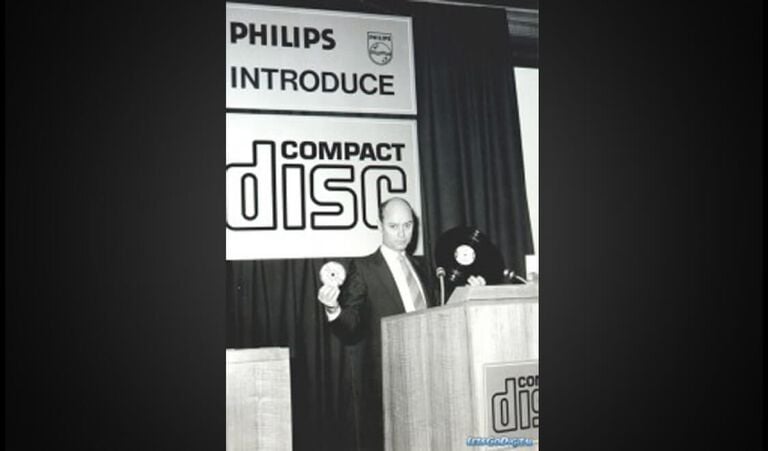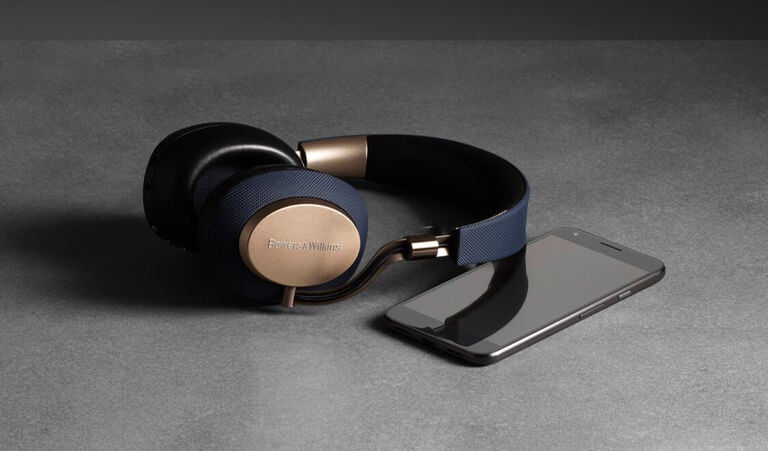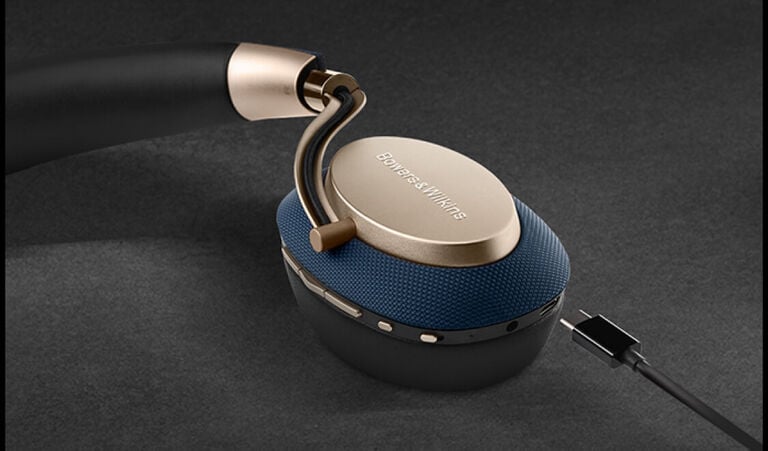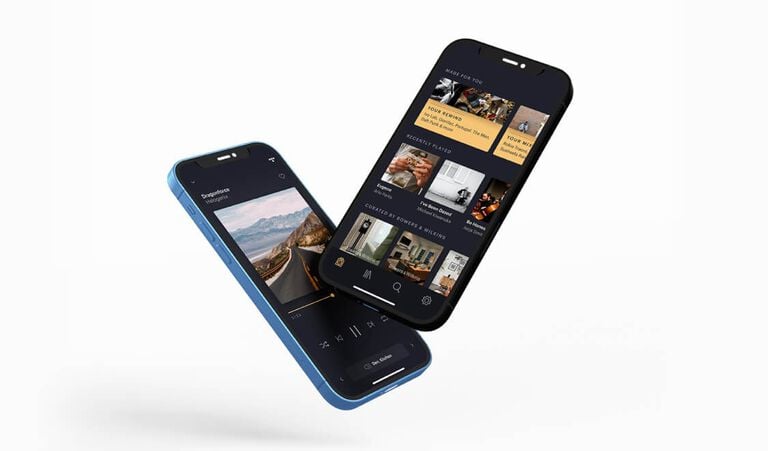The definitive guide to 24-bit FLAC
High resolution downloads are changing the way we enjoy music, opening up possibilities undreamed of back in digital's early days...

CD was revolutionary when it first appeared, just over 30 years ago: none of the surface noise of well-played LPs, no annoying ticks and pops caused by invisible scratches, no need to handle the discs with kid gloves – though the early demonstrations of discs smeared with jam still playing were a little over the top! – and instant access to any track on an album at the push of a button. CD running orders could be programmed, favourite tracks repeated and the duff ones skipped, and in time added features such as CD Text readouts of album, track title and artist would become possible.
For all that, CD was always a compromise, using technology that was only just cutting edge at the time. 30 years on, we can do so much better.
Digital audio encodes the analogue musical waveform, using Pulse Code Modulation. With PCM, the two basic factors that determine the sound quality are bit depth (which determines the quality with which the analogue signal is digitised), and the sampling frequency (which is the number of times per second that the analogue signal is digitised). CD is a 16-bit, 44.1kHz system, what’s needed to improve conformity between the analogue original and the digitised version is a combination of more bits in each samples, and more samples for each second of music: the more bits you use, the more natural the music sounds, and the faster the samples, the wider the frequency range.
CD’s 16-bit/44.1kHz digital system may have been the apparent state of the art in 1982, but it didn’t take long for it to get past its sell-by date. Indeed, some say it was only ever almost good enough for high-quality sound reproduction: Malcolm Hawksford, Professor of Psychoacoustics at Essex University, feels that, ‘It was near the limit, but in my view probably a bit marginal. Ideally, at least 20-bit resolution at 60 kHz sampling frequency would have been better.’
However, 16-bit/44.1kHz is what we got back in 1982, and 16-bit/44.1kHz is what CD still uses more than three decades on: we’ve been trapped in a technology ‘almost good enough’ 30 years ago for all that time, just like we would be with everything else we own if all development had been stopped back then.
Yes, there have been attempts to replace the CD with something better – in the early 1990s not one but two ‘high-resolution’ audio formats appeared, and battle was joined between DVD-Audio and the Sony/Philips Super Audio CD (or SACD), the former offering 24-bit audio quality for greater resolution, improved dynamics and greatly reduced distortion, while the latter’s Direct Stream Digital system used a sampling rate of 2.8224Mhz, 64x that of CD and single-bit sampling.
The new formats also offered the opportunity for multichannel surround sound and greater security and copy protection – one good thing for consumers, it was suggested, and one for the record industry. However, there was a problem or two…
DVD-A discs needed a special player – not just a standard DVD-Video machine – and these were a while coming, while the music retail industry wasn’t keen on stocking releases in multiple formats, and dealing with a hassle of buyers picking up a DVD-A disc by mistake and finding it wouldn’t play on their CD player.
SACD had an answer to that one: its multilayer discs allowed back-compatibility with CD hardware, which just saw them as standard CDs. Only when used in an SACD player was the higher-resolution layer ‘unlocked’. That meant record stores could sell just one disc for SACD and CD buyers, but then the pitching of SACD as a premium medium would have meant CD prices rising, at a time when deep discounting on music was really beginning to kick in.
What has, unfortunately, made a big impression on the market is compressed audio formats, notably MP3: originally used to allow sensible amounts of music to be stored on early personal music players with very limited storage capacity, MP3 can reduce the size of a music file by around 80% by removing most of the sound you can’t hear – quieter sounds masked by louder ones, for example. Unfortunately along the way it also loses quite a lot of the sound quality you can hear, and while the losses may not be so apparent on lower-quality equipment or when played in noisy environments – on headphones in the street or on public transport, for example, or on standard-fit audio systems in many cars –, when you step up to better audio systems it’s all too easy to hear the reduction in quality.
The good news is that while MP3 does’t sound too great, it did open up new channels through which music could be obtained – via online downloads.With those channels opened up, Free Lossless Audio Codec – or FLAC – now makes it possible to download music at CD quality or better, or store your CDs on computer or external storage, while saving up to 50% of the file size without losing any quality.
The clue’s in the term Lossless: FLAC packs music without losing any of the content or quality, and when ‘unzipped’ correctly the file is exactly the same as the original file. And while we’ve seen a number of rival lossless systems, from Apple Lossless (ALAC) to Windows Media Audio Lossless (WMA Lossless), the Free Lossless Audio Codec (FLAC) is the system of choice for many music-loving hi-fi buffs, simply because it’s not tied to any one manufacturer’s systems.
And it can do more than cut the size of CD-quality files: FLAC can also come in 24-bit form and beyond, as Albert Yong of Bowers & Wilkins explains: ‘The system is so flexible that it can take anything from 4 to 32 bits and sample rates up to 655350Hz in 1 Hz steps.’ he says.
FLAC, first introduced in 2001, is opening up a whole new world of high-end, high-resolution audio for enthusiasts: 24-bit digital has a theoretical resolution of 144dB (compared to around 96dB in CD’s 16-bit) which is more than enough, given that 130dB is the threshold of pain for the human ear. That means you can get ever closer to the master-tape used in the studio, as well as gaining all the information made possible by the greater data-rates of these high-resolution files: Albert Yong says ‘The difference is in the detail. Sounds generally are more open, and there is an extra level of airiness in the music. Voice and instruments sound closer to live, and more dynamic as well.’
While you can use computer software to rip your CDs into FLAC, there’s also a growing number of sites offering downloads at CD quality and beyond including Society of Sound. We’ve structured our site to make downloading FLAC a breeze. Once you’re signed up as a member you get free albums every month to download; it’s just a matter of downloading a zip file, unzipping it into whichever folder you want on your computer or storage device, and then playing your music using your choice of player software.
If you’re looking to build up a FLAC library of your existing CD collection, then a good starting point for ripping is Exact Audio Copy or dBpowerAMP. These are freely downloadable applications for Windows, commonly thought to be the best sounding and most bug-free. Mac Users can try Max, MacFlac or X Lossless Decoder.
To play the music, there’s a range of software players available, though as you’re using FLAC you’ll find neither iTunes nor Windows Media Player will handle the files directly, so you may have to use a modification to those programs or convert the files to play them. Fluke, for example, is a freeware program that works as ‘plug in’ for iTunes (Mac platform), but it can be buggy.
There are various programs available to convert files to PCM or even Apple Lossless, such as Max for MacOSX, but the best option is probably to use a different player solution, which will play all files in their native format.
On Windows systems, Winamp can play a wide variety of lie formats, and even burn 16-bit files to CD while other good player packages include Foobar2000, Media Monkey, Vox and Nightingale, the last of these being a ‘forked’ version of the now defunct Songbird package, having an interface very similar to iTunes and capable of playing almost any file you throw at it.
Nightingale is also available for Mac OSX, and like other players will hunt down all the music on your computer and add it to its own library if you require. These programs also allow editing of the ‘metadata’ of your music files – the information used to identify the music – should you find a rip or download doesn’t quite have the information you want about artist, album, track and so on.
Amarra Mini by Sonic Studio is a more sophisticated system that piggybacks on to iTunes, replacing much of its audio code with a superior sounding and more flexible system. Sound is excellent but you pay for it; the basic Junior version which gives FLAC playback up to 24/96 starts at $99.
Audirvana Plus (www.audirvana.com) is another fine application that, like Amarra, shuts down certain parts of your computer to minimise drain on CPU resources, to (so the theory goes) give better sound. There’s a free trial download but you’ll have to pay for the full version. It now offers optional integration with iTunes and is a strong, stable performer. For Mac users, its combination of value and performance is currently hard to beat.
All these programs work as the playback system, but unless you’re happy to listen via your computer’s speakers, or a pair of headphones plugged into it, you’ll need a means of connecting computer to your audio system in order to hear your new high-resolution music collection.
- The simplest way to do this is to take an analogue line output from your computer soundcard. This is likely to have a 3.5mm stereo mini-jack plug, so you’ll need a cable with a 3.5mm stereo plug on one end and a pair of RCA phonos on the other, to connect into a spare line input on your amplifier to system (although systems and amplifiers increasingly have a 3.5mm input on the from for just this purpose. This method will give a reasonable sound, particularly if you have a good quality soundcard, but it’s not ideal – computers are electrically ‘noisy’ environments, and it’s best if at all possible to pipe out the digital signal away from the PC or Mac.
- A range of USB DACs are now available to plug straight into your computer and provide an analogue output. Some provide a line output to connect to a hi-fi system, while others allow headphones to be connected for a truly portable high-resolution system, and there’s now a wide range of digital to analogue converters and even amplifiers with USB inputs. Prices start at about £100, while it’s perfectly possible to spend many times that amount on a DAC or headphone amplifier designed for high-resolution music.
Most of these DACs are powered from the computer, and use an asynchronous USB connection, so the high quality clock onboard will control the computer’s digital datastream. This gives tighter, smoother sound compared to standard asynchronous USB, as a result of lower jitter.
- There’s also a small selection of personal players able to play high-resolution FLAC files (among other formats), should you want to take your music library with you on your travels. The most affordable of these starts from under £200.
- Wireless and network streaming open up much greater flexibility. and also allows the streaming of music without the need to have your computer on all the time. You can copy your entire library to a Network-Attached Storage (or NAS) device, which is basically a hard-disk store designed to connect to your wired or wireless network storage, and which can be accessed by multiple players (either standalone systems or network music players designed to connect to a hi-fi system) on your home network.
Several players can be used at once, each playing different music if required: if you want a whole-house music solution, networking is definitely the way to go. Prices for NAS devices start from under £200 for a simple unit, and players at under £400. And the choice out there keeps on growing, as FLAC music catches on.
However, whichever solution you choose, the sound you achieve will only ever be as good as the quality of the files you’re playing, and that’s why we at Bowers & Wilkins, with almost 50 years’ experience of making top-quality premium loudspeakers, take FLAC very seriously. Not only is it convenient, with its shorter download times and almost bombproof content tagging, it’s also upgradable as high-resolution formats evolve: one label – Norway’s 2L – is already offering 24-bit/352.8kHz FLAC files taken from its original DXD masters.
Bowers & Wilkins’s Albert Yong says that ‘FLAC is as good as it can get for now. I think what it brings is not limited to quality of audio, but the added convenience as well’. And whereas once the choice of high-quality music in high-resolution FLAC was limited, more people aware of what high-resolution music can bring to their listening experience.


